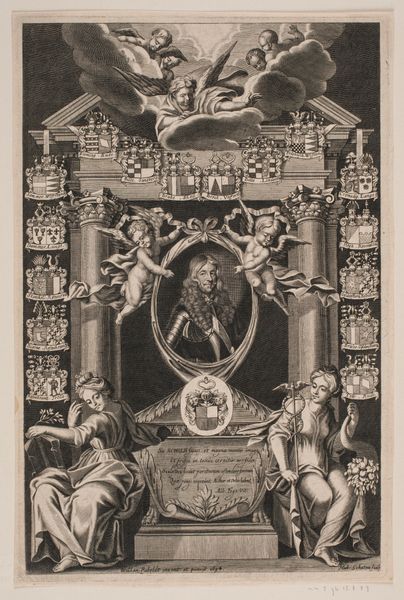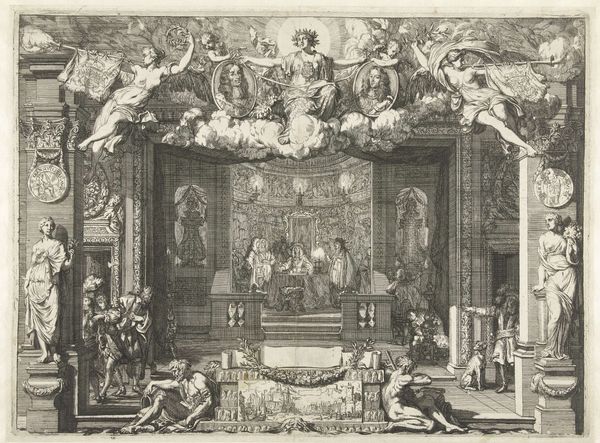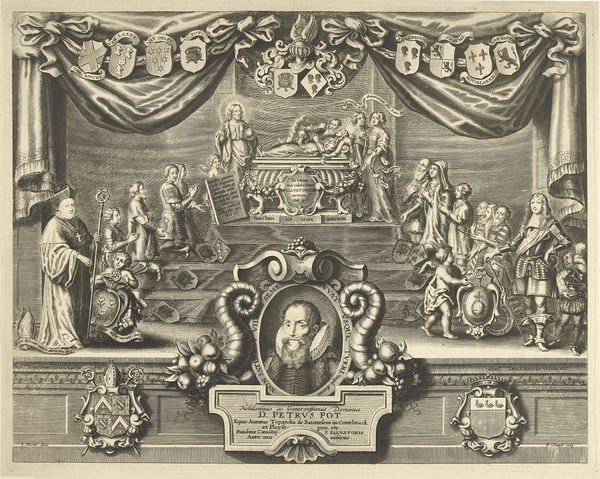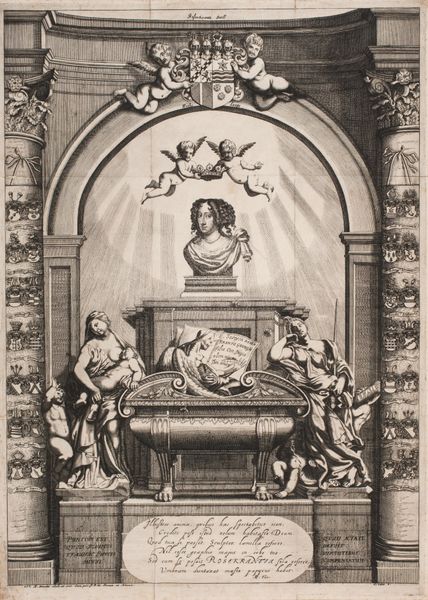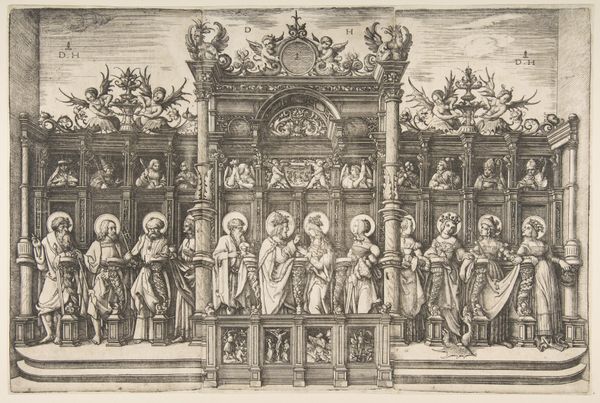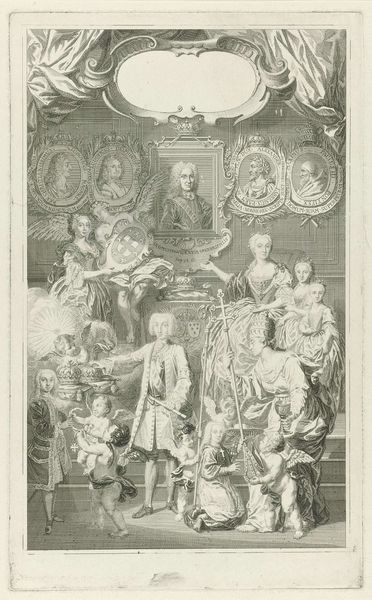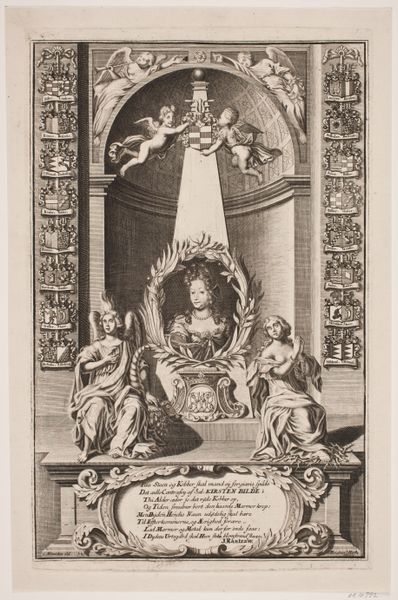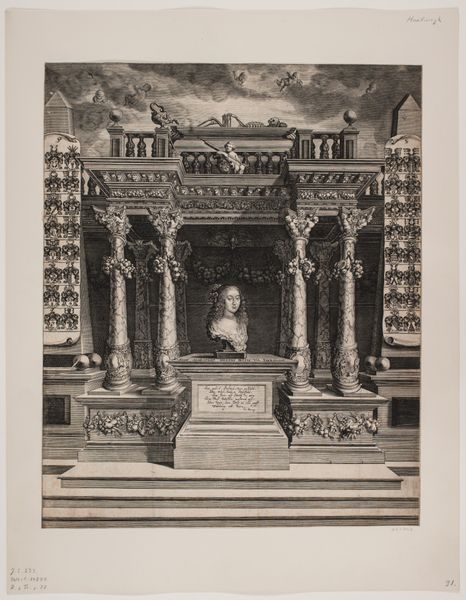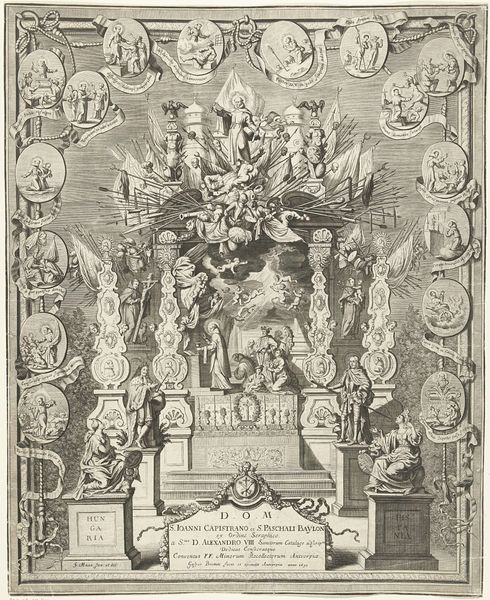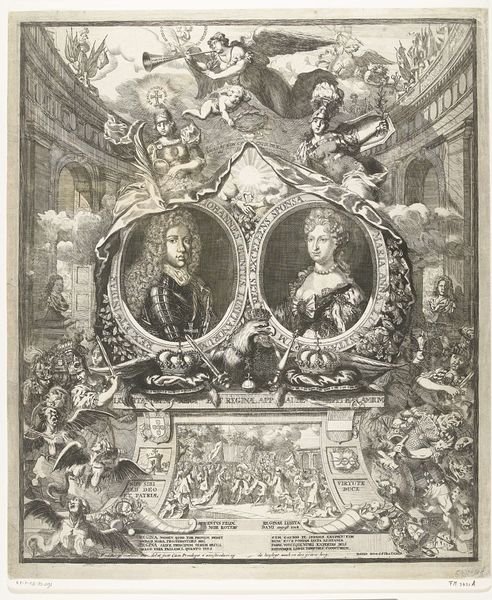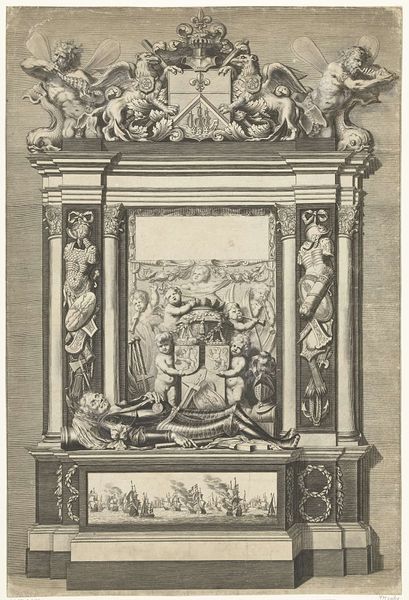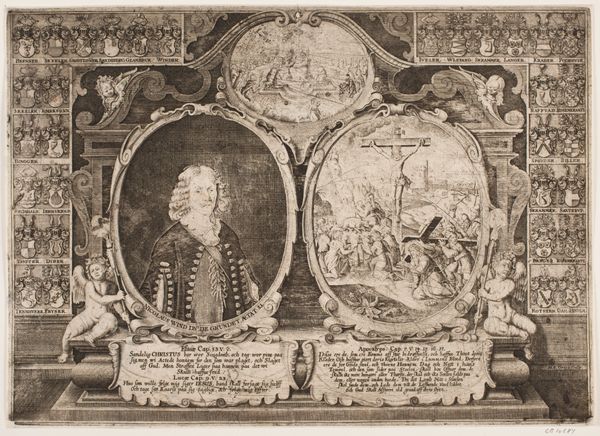
print, engraving
#
portrait
#
baroque
#
dutch-golden-age
# print
#
figuration
#
history-painting
#
engraving
Dimensions: 510 mm (height) x 405 mm (width) (plademaal)
Editor: So, this engraving, "Mette Rosenkrantz. Mindeblad," made between 1665 and 1672 by Albert Haelwegh, feels incredibly ornate, almost like a stage set. The stark contrast between the dark lines and the pale paper gives it a dramatic, theatrical air. What strikes you about this piece? Curator: I'm immediately drawn to the labor invested in its creation, both conceptually and physically. Think about the engraving process: the skilled hand meticulously carving lines into a metal plate. The social context is also vital; engravings like this served as a form of visual propaganda. Notice how the detailed depiction elevates Mette Rosenkrantz, transforming her image into a commodity circulated among elites. What statements is this material process making? Editor: That’s fascinating! The "visual propaganda" angle makes sense, especially with the crests along the sides and the bust-like representation in the center of the composition. It's clearly intended for distribution among the wealthy. Could this level of detail also serve a spiritual purpose? Curator: Perhaps, but let’s consider the relationship between artistry and commerce at that time. The religious symbolism, the cherubs and skull, become design elements incorporated into a luxurious and bespoke artifact. Is it devotion, or display of social standing, made available through print production? Editor: I see what you mean. It's easy to get caught up in the symbolism, but focusing on the materials and how they were used really shifts the focus. Curator: Precisely. Consider the accessibility afforded by engraving. It allowed for the mass production of images that could be distributed to a wide audience. Who has the ability to own such items and what value is associated with ownership? How does that impact its symbolic function? Editor: So, by understanding the labor, the materials, and the social context, we see that the work speaks to much more than just individual devotion. Thank you! Curator: Exactly! This kind of perspective encourages us to question whose stories get told and how materials serve these ends.
Comments
No comments
Be the first to comment and join the conversation on the ultimate creative platform.
